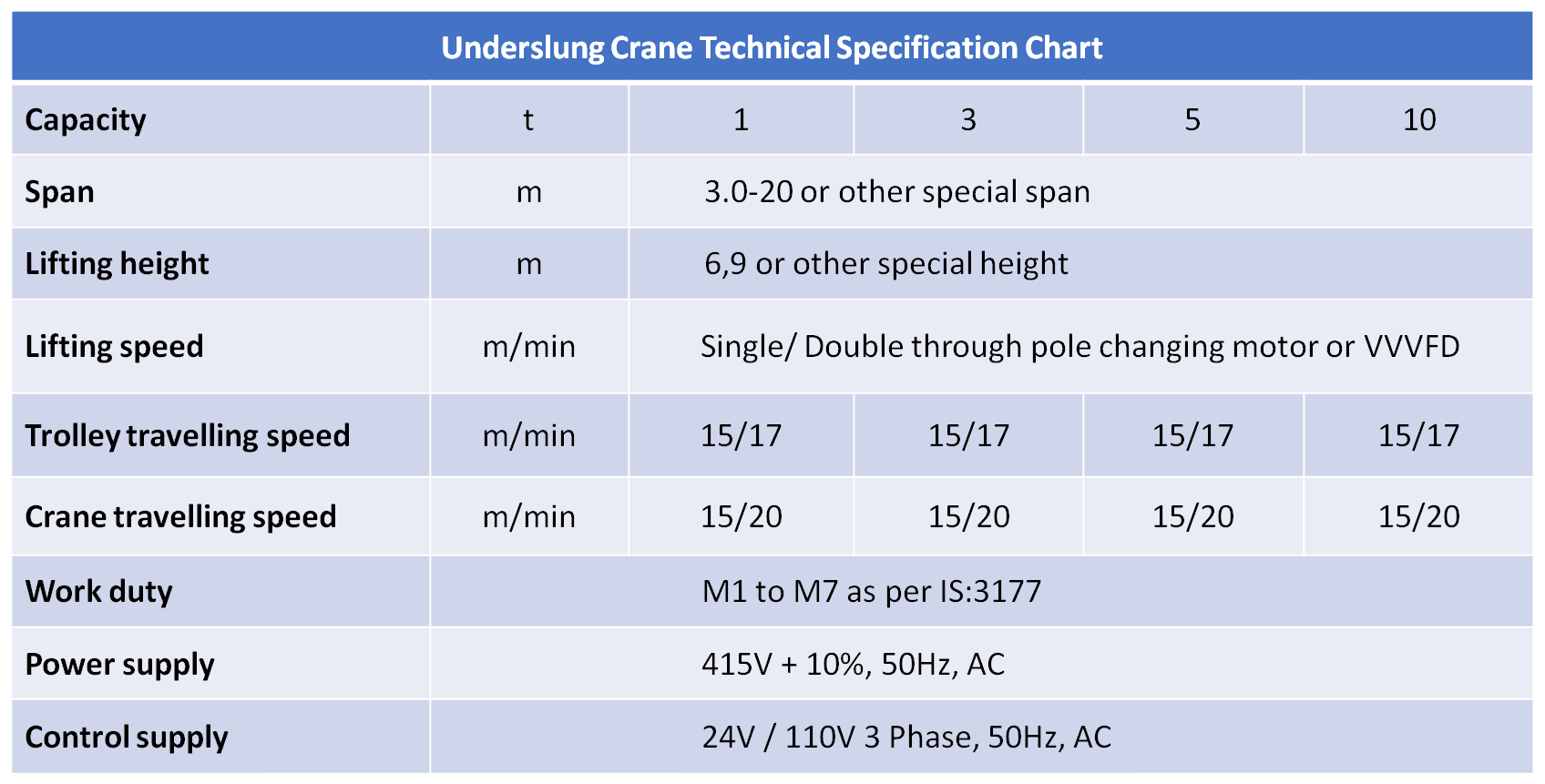
Product
We bring perfection with care
Advantage
- Light structure, easy installation and maintenance
- Widely used in different places for hoisting such as factories, warehouses and material yards;
- Reasonable structure, strong bearing capacity
- Low noise, soft starting and stopping
- Safe and reliable operation
- Low cost maintenance, long working life
- Strong box type, welding by machine hand
- Wheels, wire rope drum, gears, couplings are processed by CNC machine center, TOP quality control;
- Heavy duty Sq. cage motor with VVVFD, IP54 or IP44,insulation class F
- Standard Make main electric parts are used for durable and safe operation
Technical Information
- Rigid box-typed/ customized beam/ standard beam main girder
- Referring IS:807 & IS:3177 standard
- Shot blasting for the whole body after welding and releasing internal stresses;
- Driven by electric geared motor
- Running smoothly, brake efficiently, long service life
- Lifting Capacity: 1~10t
- Span Length: up to 20m
- Lifting Height: up to 12m
- Working Class: M1-M7
- Ambient Temperature: -20~50℃

Description
If you require a lifting system for an application where the available headroom is limited, an underslung crane could be the ideal solution. While the end carriages which support the horizontal beam or girder of most overhead cranes typically run on top of the gantry rails, they are located underneath underslung cranes.
This useful in workplaces where there is a low level ceiling or where the distance between the floor and hoist needs to be maximized.
Under running overhead cranes typically are limited in capacity by two factors, the strength of the flange of the beam and the structure from which they are hung. Under running or under hung overhead crane systems are popular because they can be suspended from the ceiling or roof of a building, saving floor space that would be consumed by runway columns in a top running design.
Accessories
Dual Speed:- The more cost-effective option is to have a single speed but most users prefer to have the option of dual speed control on all motion functions. This enables a slow speed for creeping a load in to place as well as a fast speed for normal operation.
Limit Switches- Offered as standard on all motions and optional on hoisting upper and lower limit
Radio Remote Controls:- As an alternative to a wired pendant control, buyers of Electric Chain Hoists are able to specify a radio control system which enables the user to stand at a safe, remote distance from the load, this has many added advantages such as the operator being able to see from a better angle of the load, he also remains a safer distance from the load and has better flexibility when operating the hoist in general.
GREATER SPEED ADJUSTMENT:- VFD controls let you choose from multiple speeds, allowing you to customize your hoist speeds to your application.
IMPROVED LOAD CONTROL:- Positioning a load using a single-speed hoist may cause shock loading or load swings. Two-speed may not give you the desired range of speeds for sensitive positioning because they typically are offered in 3 to 1 or 5 to 1 speed range. A VFD allows for smooth operation by gradually slowing down a load and offers speed ranges of 100 to 1 or more in many applications. Retrofits of existing cranes and hoists easily allow for 10 to 1 speed range. VFDs also allow for smooth acceleration to prevent load swings in the traverse motions.
DUTY CYCLES:- CMAA Class A-F. A VFD is c matched with a braking resistor, depending on the duty cycle of the motion. A regenerative drive may also be used, which is not dependent on duty cycle.
EFFICIENCY:- A VFD will only consume the power that’s needed, thus saving energy compared to contactors and soft-starters.
INCREASED HOIST LIFE:- Some variable frequency drives provide thermal overload and over current protection for the hoist motor, prolonging its life. VFDs also utilize a ramp-down-to-stop method of braking rather than using brake shoes to slow down. The brake is only used for parking and emergency situations, which greatly increases brake life while reducing the need for maintenance and adjustments. VFD’s eliminate the need for reversing contactors (another maintenance and repair item) for motion and speed control


